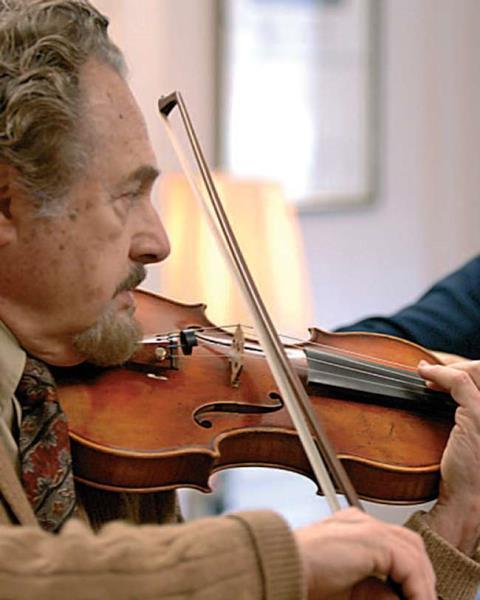The American maestro discusses the importance of understanding a work's cultural background and performing by memory to convey this. From 2016

Explore more Featured Stories like this in The Strad Playing Hub
Begin by studying the score with or without the violin in hand. Sing the line to yourself to better understand how you want to hear it played. We must respect the composer’s intentions, such as markings, dynamics, and notations before applying our personal ideas. The score is the 'black and white' canvas on which the artist, by using fingering and bowing techniques, applies colour and character appropriate for each composer. Vibrato and bowing technique varies depending on the country of origin of the composer and must be tastefully applied.
Understanding the cultures and manners of a country will certainly give you a better picture of how to interpret the music. With films and computers to aid us and stimulate our imagination, we can get a better feeling of how to interpret a composer from Germany, Russia, France, etc. Each requires a different bow technique and vibrato variation to express the characteristics of a country. For example, the approach to playing Bach is entirely different to playing music of Tchaikovsky. Bach needs bowing restraint with minimal vibrato and, at times, none at all, whereas Tchaikovsky needs a lush, throbbing vibrato with a more aggressive bowing style to depict Russian characteristics.
Be honest with everything on the printed page. When beginning to learn a work, repeat a section many times while keeping your eyes on the page. As soon as you possibly can, close your eyes and play it from memory. Unknowingly, your eyes have already photographed the music. If you lose a note, open your eyes and look again at the page. Repeat the process until you can play it in your sleep.
Memorisation is a process of hearing each note before you play it followed by motor reflex. You cannot fully express yourself in an interpretation if your eyes are riveted on the music. This applies to every composition that you play whether it be a concerto or sonata. Yes, sonatas are for two equal partners. In Beethoven’s case, he notated sonatas as works for piano and violin. I would recommend learning them by memory or list the pianist’s name first on your next program. Using a music stand may be acceptable in a salon but not on a concert stage. It is distracting to see pages turned in the middle of a performance.
Memorisation is the key to interpretation. The music must become a part of you if you are completely immersed in what you play. Remain focused on expressing what your inner ear wants to hear. Trust your memory and do not become preoccupied with fingerings and technical problems. Repetitive practice will do its part and motor reflex will take over. Concentrate on your bowing. The bow is your paint brush and capable of providing all of the textures and nuances required if sensitively employed. It is also your breathing process and breathes life into every note that you play. Imagine how gratifying it can be when you can control your sound and characterise your music making with the fingers of your right hand. Interpretation and memorisation are within your grasp.
www.rosandmemoirs.com
Subscribe to The Strad or download our digital edition as part of a 30-day free trial. To purchase single issues click here
Read: Aaron Rosand's first blog for The Strad on producing a beautiful tone here.
Read: The 3-points practicing routine: Description - Action - Result
Discover more Featured Stories like this in The Strad Playing Hub











































No comments yet